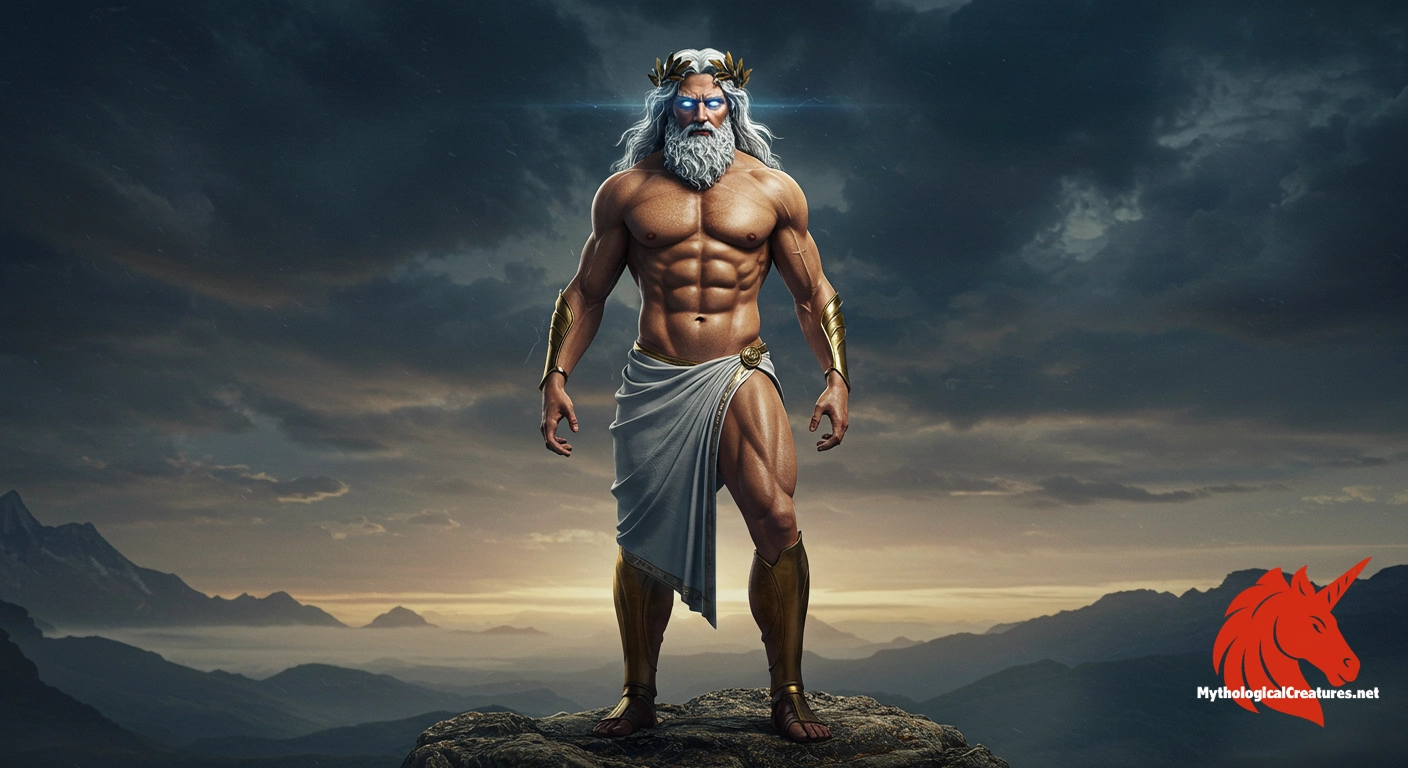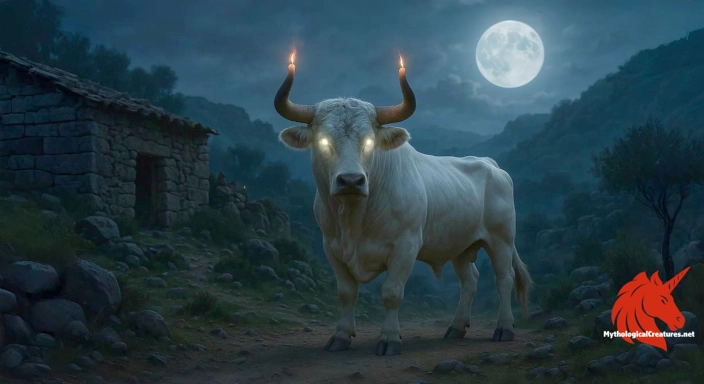Zeus: Zeus is the supreme ruler of the Greek gods, governing the sky and thunder from Mount Olympus.

Zeus
Zeus - Central to Greek mythology as the enforcer of divine order and justice
Origins & First Encounters
Zeus emerges as a towering figure in ancient Greek mythology, embodying the essence of divine authority and natural power. Born of Cronus and Rhea, he overcame a predestined cycle of familial conflict by overthrowing his father to establish a new order on Mount Olympus. His birth is enveloped in dramatic tales of concealment and survival, highlighting the theme of renewal that pervades his myth. He is intricately linked with the heavens, wielding thunderbolts and commanding the skies with unmatched majesty. As the foremost deity, Zeus's influence extends beyond mere meteorological phenomena, symbolising the principles of justice, order, and leadership. His narrative weaves together elements of both heroic valor and the pitfalls of unchecked power, enriching the tapestry of Greek lore. Early mythic accounts intertwine his personal exploits with broader cosmic events, reinforcing his role as a mediator between mortals and the divine realms. The enduring legacy of Zeus as a protector and arbiter of fate continues to resonate culturally and intellectually through the ages.
Source Texts & Tale Variants
Ancient sources like Hesiod’s Theogony and Homer's epics provide some of the earliest and most influential accounts of Zeus’s life and deeds. These texts not only trace his lineage and ascension to power but also frame him as a cosmic force whose will governs both gods and mortals. In poetic narratives, his epic battle against Cronus and the subsequent establishment of a royal order are depicted with lyrical grandeur and elaborate symbolism. Multiple versions of his myths exist, with regional cults and later literary compositions introducing subtle variations to his character and adventures. In the Homeric tradition, Zeus is portrayed as a balanced executor of fate, embodying both mercy and retribution. Various fragments of lost plays and inscriptions further embellish his multifaceted persona by highlighting instances of his intervention in human affairs. Oral traditions and local legends also contributed to his evolving narrative, ensuring that each retelling enriched the mythos surrounding his divine authority. Collectively, these diverse sources illustrate the complexity and adaptability of Zeus’s character as his story was passed down through centuries of oral and written transmission.
Form & Powers
The artistic depictions of Zeus consistently present him as a man of imposing stature and regal bearing. Classical sculptures and vase paintings portray him with a full, majestic beard and a robust, athletic physique that exudes strength. His face often reflects wisdom and determination, with a gaze that seems to hold the secrets of both the heavens and the earth. Flows of divine robes and often a cloak adorn his image, symbolising both his authority and his omnipresence across the natural world. The thunderbolt, a signature attribute held tightly in his hand, serves as a visual manifestation of his energetic power over the skies. In many artworks, an eagle is depicted in close proximity, underscoring his dominion over the air and his role as the supreme aerial ruler. Variations in his portrayal can be seen across different eras and regions, yet a consistent pattern of strength, leadership, and a commanding presence remains evident. The cumulative effect of these physical descriptions underscores Zeus’s embodiment of divine perfection and martial vigour.
Regional Faces
Across the varied landscapes of ancient Greece, Zeus was revered under multiple epithets and forms that resonated with local traditions and cultural nuances. In some regions he was known as Zeus Olympios, emphasising his role as the overarching ruler of all other gods and serving as the touchstone of divine authority. At Dodona, for example, his connection to nature was accentuated through sacred groves and the venerable oak, forging a unique link with local worship practices. In other areas, the attributes of hospitality, protection, and justice were highlighted, reflecting each community’s specific values and social needs. The integration of Near Eastern iconography at times introduced hybrid elements into his depiction, such as the scepter and other symbols that underscored his royal status. Local festivals and rituals celebrated his diverse manifestations, from the beneficent guardian of travellers to the fierce enforcer of cosmic law. Distinct regional myths and cult practices provided a rich, varied legacy that allowed communities to connect with Zeus in deeply personal ways. These local variations not only enriched the mythological tradition of Zeus but also exemplified the adaptive nature of ancient religious beliefs.
Cultural Parallels
The figure of Zeus finds compelling parallels in numerous mythological traditions beyond the Greek world. He shares significant traits with the Roman Jupiter, whose authority over the skies and the natural world mirrors that of Zeus in form and function. In the broader Indo-European context, deities like the Vedic Indra and the Norse Thor exhibit similar associations with thunderstorms and dynamic leadership. These parallel mythic figures often reflect their societies’ values of power, order, and the unpredictability of nature. Common symbols such as the thunderbolt and majestic birds appear recurrently across these cultures, reinforcing the connection between divine might and natural phenomena. Comparative studies reveal that despite cultural variations, the archetype of the sky god frequently embodies the dual nature of benevolence and wrath. Artistic interpretations across different societies adapt and reinterpret this central figure to resonate with local ethos and social structures. By examining these cross-cultural connections, Zeus emerges as part of a wider tapestry that illustrates humanity's enduring attempt to personify the forces governing the cosmos.
Legacy & Modern Evolution
The evolution of Zeus from a central figure in ancient religion to a modern cultural icon encapsulates the dynamic nature of myth over time. In classical antiquity, his image was immortalised through sculpture, literature, and ritual, establishing him as a paragon of divine authority and wisdom. Over centuries, reinterpretations of his myth have allowed him to remain a potent symbol in art, philosophy, and popular culture. The Renaissance witnessed a revival of classical ideals in which Zeus was celebrated as an embodiment of both celestial harmony and human grandeur. In modern literature and cinema, his character is often reimagined to reflect contemporary themes of power, responsibility, and moral ambiguity. Educational narratives and artistic expressions continue to invoke his image when exploring ideas of order, justice, and the interplay between fate and free will. His myth has also influenced contemporary debates on authority, bridging ancient divine narratives with modern political and social ideals. Today, Zeus endures not only as a relic of the past but as a living symbol that continues to inspire, challenge, and intrigue audiences around the globe.
Interesting Fact
An interesting fact about Zeus is that his Roman equivalent, Jupiter, shares many of his thunderous attributes, highlighting the widespread influence of his myth across cultures.
Quick Creature Info
Origin:
Associations:
Our Mythic Legendary Rating:

Also Sometimes Known As:
Habitat:
Supernatural Powers:
Physical Attributes:
Abilities:
Behavior:
Lore:
References
Discover Another Mythical Legend You May Not Have Heard Of?
Uncover the mysteries of ancient folklore and expand your knowledge of legendary beings from cultures around the world.
Dare to Meet the Erchitu....
Mythical Disclaimer: The images and data on this site are derived from various historical and literary sources, but we have found that many myths often have multiple versions and interpretations across references, sometimes contradictory. As a result, these creature depictions are artistic interpretations—imaginative blends of folklore, legend, and a dash of AI guesswork. Because creature descriptions vary widely, our illustrations and accompanying information represent our best effort to honor mythology while bridging creative gaps. Enjoy these interpretations—just remember, we've done our best to respect the stories and validate available data, but in the realm of mythology, details often shift, imagination leads the way, and nothing is ever set in stone!
Curated by the Mythological Creatures Team (rev. May 2025)
